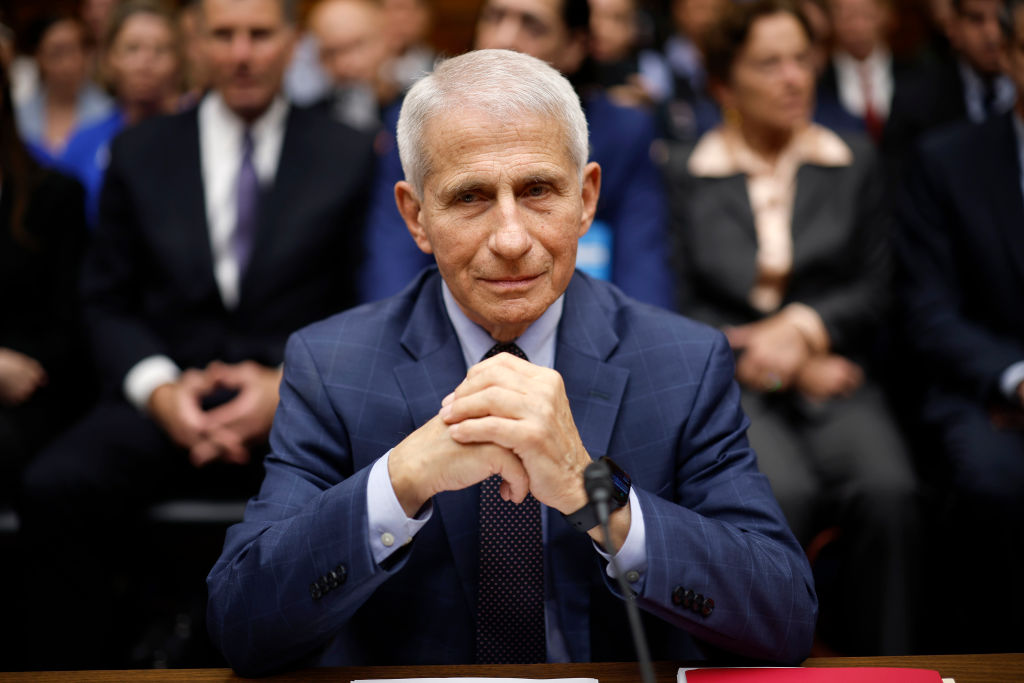Set aside your opinions about abortion for a moment. Throw down the fluttering placards about “THE PRO-LIFE GENERATION” and “KEEP ABORTION LEGAL”; avert your eyes from the demonstrators praying outside Planned Parenthood. And ask yourself this: was Roe v. Wade good law? Was it sound that a “right to privacy” was conjured out of pseudo-constitutional dust and then used to overturn abortion laws in all fifty states?
My guess is that even left-wing law professors have their doubts. Now, the Supreme Court has finally gone and rectified this hideous blunder. Pro-lifers rejoice: the day we’ve hoped for has finally arrived.
The decision in Dobbs v. Jackson Women’s Health Center was handed down on a bright and sunny morning in Washington, DC. It came earlier than expected — the Court still has several more decisions to get through this term, and many assumed they would save their most controversial case for last. Not so. Instead they handed it down on a Friday, perhaps to give the inevitable protesters time to cool off over the weekend.
At first skim, the decision appears very similar to the draft that leaked back in the spring. The final opinion was also written by Justice Sam Alito, and it also doesn’t mince words. It accuses Roe of being more legislation than court ruling, attacks its gibberish “viability standard,” and says it’s distorted entire legal doctrines. It reads like not just a blast at Roe but a first strike at the very bedrock of 20th-century progressive constitutional theory, which rests not on the Constitution itself but on that dubious right to privacy. In fact, Clarence Thomas, in a separate concurrence, goes there and comes back: “In future cases, we should reconsider all of this Court’s substantive due process precedents, including Griswold, Lawrence and Obergefell.”
Those are the rights to contraception, gay sex and gay marriage respectively. Of course, no one is about to ban condoms: the GOP was last spotted trying to make it easier for women to buy birth control. But the point is that these should be matters for legislatures, not courts. And Thomas’s teasing that he agrees shows what a potentially revolutionary ruling this is. No wonder the shivering John Roberts couldn’t fully sign on. Roberts declared in a separate concurring opinion that nothing in Dobbs “requires that we also take the dramatic step of altogether eliminating the abortion right first recognized in Roe.” And yet we did, didn’t we? Mistakes can be corrected despite the stranglehold of stare decisis. How about that.
Pro-lifers, of course, are jubilant. The Federalist Society, which grooms originalist and pro-life legal thinkers, has been vindicated after growing criticism from the right. And Donald Trump has the biggest feather in his cap yet: three of the five Dobbs justices, the president who killed Roe. Expect him to be unable to say “pass the gravy” without bringing this up. In fact, this decision just might be the tipping point that convinces him to run for president in 2024.
The left has responded with its usual blend of hand-wringing over civilization as we know it and threatening to set things on fire. They are largely united in favor of legal abortion, and lately they’ve been tightening the screws. The fun-loving apparatchiks over at the Huffington Post recently released a list of abortion-related wrongspeak we’re no longer allowed to say. That includes “late-term abortion” (“it is not a clinical term”), “back-alley” (“stigmatizes self-managed medication abortion”), and “women’s issue” (“anyone who can get pregnant can have an abortion”).
And that’s just it right there. Abortion survives in its present form precisely because we don’t want to talk about it. We prefer vague euphemisms like “procedure” and “reproductive rights,” refusing to confront the actual nature of what’s happening.
One of the most chilling documents I’ve ever read was the 2010 grand jury report on Kermit Gosnell’s house-of-horrors abortion clinic. It’s filled with righteous anger over Gosnell’s crimes and attempts by pro-choice politicians to cover them up. Yet it still can’t help veering back and forth between the words “baby” and “fetus,” using them interchangeably. This is no small matter. Between those two terms is supposed to lie all the daylight in the world — a fetus may be killed while a baby may not be. Yet confronted with the grisly reality of abortion, we realize it’s all just semantics and incidental geography. We don’t know.
This is why I’m cautiously optimistic about the future. The end of Roe doesn’t mean abortion is banned; it means it’s returned to the states for democratic deliberation. And the last thing pro-choicers want is to have a full-on debate, let alone fifty of them. They’ve spent half a century cloaking abortion in evasive jargon. Now, thanks to a pro-life revolution, they won’t have, to borrow another word, a choice.

























